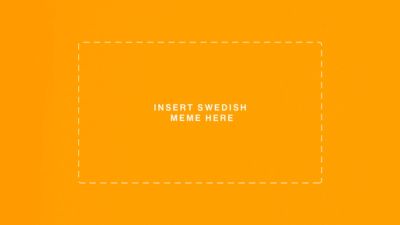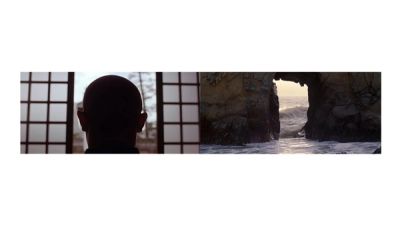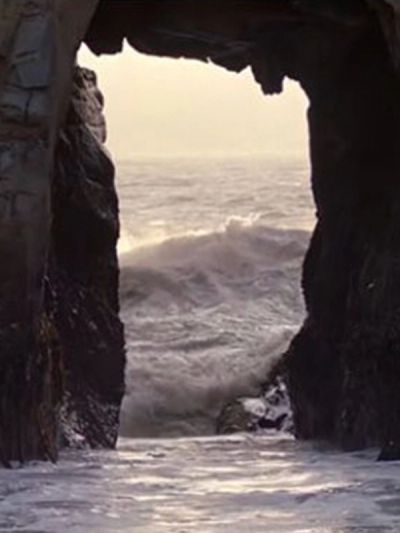
Five Films That Inspire Me as a Strategist
Building brands has a lot in common with making movies – they both require emotional, evocative, compelling stories to succeed. Executive Director of Creative Strategy Bo Bishop writes about how having a background in filmmaking is his “secret sauce” for articulating strategy.
Here’s a fun game to play at parties: When you meet new people, tell them you’re a brand strategist and count the milliseconds until their eyes glaze over.
I get it. Strategy is boring. An overly intellectual practice associated with endless Powerpoint presentations, Venn diagrams and pie charts, whiteboards littered with words like “intersectionality” and “cross-catalyzation.” It’s the unsexy stuff we slog through on the road to creativity and design.
But here’s the thing: It’s actually not. Or, rather, it shouldn’t be.
Good strategy is emotional, compelling, evocative. It has twists and turns. It’s both surprising and satisfying. It stays with you, long after the presentation ends.
I have an MFA in filmmaking. I’ve wanted to tell stories since the day I saw Back To The Future when I was five years old. Movies combine everything I love: music, photography, writing, playing, dreaming. They’re magic, a little world you can believe in and share with others. Until I met my mentor, Lee Hunt, I didn’t even know brand strategy was a thing you could do for a living. Today, I direct the strategy and writing practice at Trollbäck+Company, and the same things I love about filmmaking inform and inspire my approach to articulating brand strategies.
If a movie is boring or lifeless or purely academic, no one will enjoy the experience or even remember it. The same rule applies to strategy. Foundational brand strategy must be memorable, anthemic, and actionable if you want people to live it. This is why some of the most celebrated and enduring brands in the world have simple but impactful purpose statements: Feed and foster community, Challenge the status quo, Make people happy.
Like movies, strategy is a collective story we share – one that has to make sense intellectually, yes, but one that also has the power to move us and spark transformation. French author Antoine de Saint-Exupéry says, “If you want to build a ship, don't herd people together to collect wood and don't assign them tasks and work, but rather teach them to long for the endless immensity of the sea.” I think brands are built the same way, not by might, but by imagination.
In the last ten years, I’ve been lucky enough to craft strategies for some of the most iconic brands in the world – Disney, Marvel, FOX, Apple, CBRE, The New York Rangers, just to name a few – and I stay inspired primarily by watching movies. I consider my background in filmmaking to be my “secret sauce” as a strategist, and these are five movies I return to often for crucial lessons on writing, and presenting, strategy that endures.
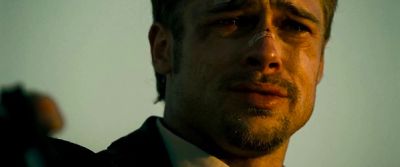

1. Se7en (1995) – dir. David Fincher
I know what you’re thinking: A dread-soaked crime thriller about two detectives tracking a religiously motivated serial killer seems like the obvious source of inspiration when that snack cake company needs a new global positioning statement. But hear me out…
This movie is a flat-out masterclass in so many things that are vital to articulating strategy: building a world, giving us people to care about, establishing stakes, and flipping everything on its head (literally) in a way that’s both logically satisfying and wholly unexpected.
I saw Se7en for the first time when I was fifteen. I would go to movies on the weekend and stay there all day, paying for one ticket and hopping from screen to screen. (General Cinemas at Chapel Hill Mall, if you’re reading this, the check is in the mail.) I went in blind to Se7en, and it was one of those formative movie experiences that felt like a revelation. I was pinned to my seat. I couldn’t look away. I had to know what happened next. The bad guy wins? But also loses? But it all makes sense?? It was shocking and gripping and fully realized, a feat of technical and narrative wizardry that begged to be seen again. So that’s what I did; I grabbed some popcorn and stayed for the next showing.
The famous David Fincher quote is this: “People say there are a million ways to shoot a scene. That’s bullshit. There are two, and one of them is wrong.”
The same is true of brand strategy. If an agency spends time with your internal team, immerses itself in your brand, understands your audience and the competitive and cultural landscapes… and then presents four or five potential Brand Purpose statements… that agency is wasting your time and money. Brand strategists worth their salt adhere to the David Fincher school of synthesis and creation: the ambitions of your team and the insights provided by research and analysis will naturally lead to a single, powerful conclusion.
Se7en taught me to be bold, confident, and incisive as a strategist. This is why our team always presents a single strategic framework for our clients to react to – viscerally, intellectually, tangibly – not equally weighted options for them to parse through. Presenting multiple options only telegraphs that we’re afraid to take a stand. If I’m doing my job well, I’m able to arrive at the right idea, something that feels logical, natural, wholly unexpected, and rewarding.
Lesson learned: Take in the information, take a stand, and synthesize your work into a single, cohesive strategy for the first presentation. There will always be time to focus, expand, and refine the work later, but it’s better to respond to one fully formed idea than numerous options that cancel each other out. And never ask what’s in the box.
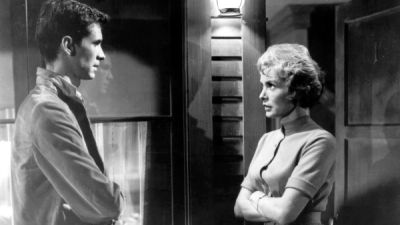
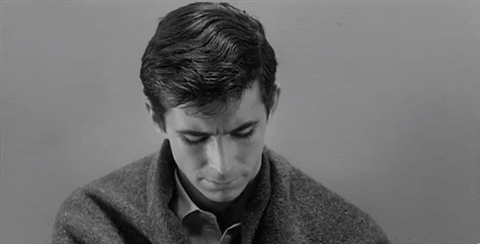
2. Psycho (1960) – dir. Alfred Hitchcock
Yep, another serial killer. But hear me out: This movie could be about English ladies playing croquet and it would still be riveting.
Why? Because Hitchcock is a master in specificity.
While I was studying at Columbia, my Directing III professor, Eric Mendelsohn, was notorious for turning his two-hour class into an all day event. We would convene at nine in the morning and often leave well after the sun had set, because Eric loves to dissect films. We would watch a movie shot by shot, pausing after each cut and unpacking what we’ve just seen, the logic behind it, the intent, the function, the emotion, the result. In this manner, Psycho became a slow-burn study in the purpose behind everything.
Everything has a purpose. Every action. Every move. Every line. Even if you don’t realize it.
In filmmaking, a million little choices add up to convey meaning to the viewer. And in Psycho, Hitchcock makes extremely specific choices to not only present the life of a very disturbed man, but to actually get us, the audience, to sympathize with him.
A shot that will forever stay with me happens early on in the movie, when Norman Bates is showing Marion Crane to her motel room. Norman unlocks the door, opens it, and stands on the threshold waiting for Marion to enter. She invites him in, and the camera does something extraordinary: it pulls back – recoils, actually – ever so slightly. With this simple move, Hitchcock tells us, without saying anything, that Norman is afraid. Mother wouldn’t approve of him being alone in a motel room with a beautiful woman. And in that moment, we recoil with him.
I strive to bring this same specificity to crafting strategy. Every word matters. Every. Single. Word. No matter how seemingly insignificant. Because they all add up to something much more than information. The difference between “inspire” and “empower” is a great example. They’re similar words, yet both elicit much different reactions in our limbic system, the part of the brain responsible for emotional and behavioral responses. Inspire is a helping hand. Empower is a raised fist. Because the purpose of strategy is to elicit action – as the futurist Alvin Toffler says, “You’ve got to think about big things when you’re doing small things, so all the small things go in the right direction” – the difference between words is crucial in eliciting the right action.
Lesson learned: Never check into a motel with twelve rooms and twelve vacancies. And pour over every single word in your strategy, because specificity creates substance, and words, when strung together in just the right order, become magic spells.

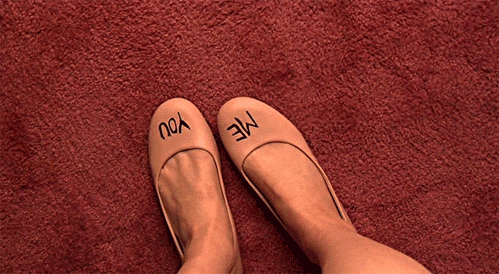
03. Me And You And Everyone We Know (2005) – dir. Miranda July
The directorial debut by one of my favorite writers, Miranda July, is an audacious, often hilarious exploration of seemingly normal human beings and their supersized need for connection.
The people that populate July’s film are far from conventional heroes. They are shoe salesmen and cab drivers, quiet teenagers and failed performance artists. Loneliness pervades almost every frame and dark subject matter is presented without apology, and yet the movie maintains a sense of optimism and buoyancy thanks to July’s insistence on never treating her characters like caricatures. You get the sense that July could turn her camera at any time on any extra and tell a fully fleshed-out story – no one is relegated to the margins.
In the industries of marketing and branding, people are often referred to as “targets” and organized within a clearly delineated set of demographics. Age, income, marital status, county of residence, number of children… These are the milestones that make up a consumer. And while this information can certainly be helpful as part of the picture, it cannot make up the entire frame. To push beyond is the obligation of an empathetic strategist.
July’s film taught me two things that form a sort of paradox for approaching foundational brand strategy: We are all one-of-a-kind and we are all driven by alleviating loneliness.
In my practice, this means pushing beyond demographics to explore psychographics – the attitudes and aspirations, needs and desires that motivate action. Rather than focusing on the superficial things that make us similar – how much money we make or the year we were born, for example – I find it much more helpful to understand the common issues that frustrate us, the practical things that would make our lives better, and the ways we seek human connection.
Me And You And Everyone We Know reminds me that audiences or consumers are never monolithic. Everyone is special and has a fascinating story. Believing that encourages me to be a good listener and generous collaborator. It inspires me to put human beings at the center of everything I do – the ones building the brands from the inside and the ones connecting with the work out there in the world. Turn the camera at any time, on anyone, and a new story emerges.
The film also reminds me to never count anyone out. Too often, brands limit their potential by narrowing their target audiences. “We’re for young men in A and B counties who make ~$75,000 per year.” Statements like these – which lead to alienating thought processes and business practices – hinder your brand before awareness is built. Instead, look at Nike: “We inspire the athlete in everyone.” This purpose is emotional, simple, actionable, and insanely elastic; the entire human race is their playground – but through a very specific lens, so it works. This allows Nike to do anything it wants while staying true to what it believes.
Finally, let’s talk about loneliness. People are inherently lonely. We live in a world where constant connection is possible, but feelings of disaffection and separation are more pervasive than ever. Studies show that the more we use social media, the worse we feel about ourselves. This may be why I’m drawn to movies and television. These mediums are made, and made to be experienced, collectively. They open us up to other people, different stories, various worldviews, entirely new worlds. They engender empathy. In the golden age of linear television, you were watching with millions of other people, even if you were watching alone. That’s a special feeling. We bond over the shows and movies we love, leading to more connection. I’ve found that, in my practice, striving to alleviate loneliness leads to more resonant work.
Lesson(s) learned: Don’t think of people as nebulous groups to be targeted, but rather emotionally complex human beings with a prevailing need for connection. Articulate strategies that prioritize mitigating loneliness. Assume that every person you encounter has a wild and dynamic story just waiting to be told, as rich and complex as your own. Avoid limiting the efficacy of your organization by unnecessarily narrowing your target audiences. And when all else fails, remember this simple truth: ))<>((
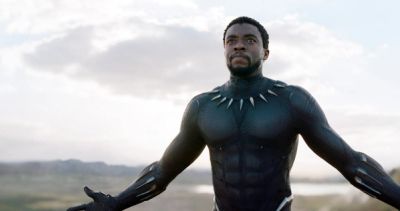
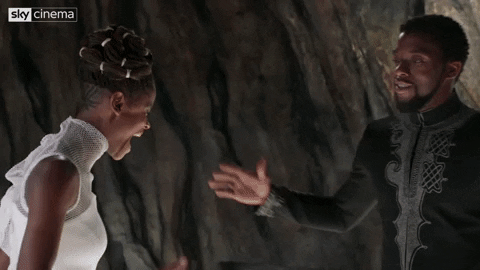
4. Black Panther (2018) – dir. Ryan Coogler
As a kid growing up in Ohio who devoured stuff like Batman, The Last Action Hero, and Encino Man, I’ve always been a sucker for big-budget spectacles. But then you enter film school and the whole Monumental Weight of Cinema History comes crashing down around you and suddenly those blockbusters seem kind of embarrassing. You could enjoy them in the same way you would a fountain Coke at the mall, sure, but you weren’t supposed to appreciate them or even adore them in the same way you would Un Chien Andalou or Killer of Sheep or Tarkovsky.
But, once in a while, a movie comes along that’s undeniable.
Black Panther. Opening night at BAM Harvey Theater in Brooklyn. Sold out crowd. One of the best and most electric experiences I’ve ever had in a cinema.
This film was massive. It had huge action setpieces, over-the-top dialogue, endless vistas, explosions and invasions and coups and climaxes. The waterfall budget alone would probably bankrupt small nations.
And yet it was also massively appealing. There’s nothing quite like seeing a crowd-pleaser with the biggest crowd possible. For 134 minutes, Black Panther owned us. People were cheering, laughing, clapping, gasping. It was like being on a roller coaster with 300 of your closest friends.
This was a Hollywood Blockbuster with a capital B, part of a complex and lucrative corporate “cinematic universe,” and yet the characters were complex – heroes and villains alike. The problems were personal. The stakes were human. The punches left a mark. The emotions were raw and weighty. Coogler and his collaborators had managed to make the most elusive of creations: a movie that’s also a film.
Seeing Black Panther made me feel like a kid again. It reminded me why I love movies in the first place: they let us dream out loud, wide awake, all at once, together. And here was a movie that everyone in my life could relate to and enjoy unapologetically without checking our gray matter at the door and with a huge grin plastered to our faces.
Black Panther reinforced the power of mass appeal.
Mass appeal does not mean middle of the road. It means something so compelling, self-assured, intelligent, and flat-out fun that it draws people in like a magnet. Tons of people from all walks of life, because it’s so enjoyable and well-crafted. That’s the work I strive to create as a strategist.
I want brand strategy to be fun. I want the process to be enjoyable. I want our clients to see a meeting with Trollbäck on their calendars and look forward to it, because they know we’ll bring some drama and energy and storytelling to the table. Even if we can’t blow up a planet in the process.
Lesson learned: Strive to make work that’s massively appealing, both in the substance of your strategy and the way you present it. Don’t be afraid to tell a story, take us on a journey, establish big stakes, and provide unexpected solutions.
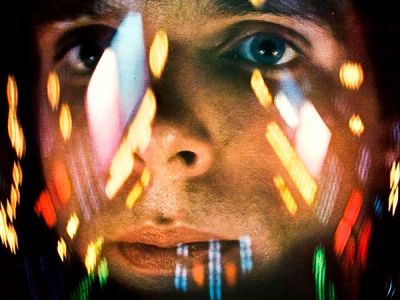
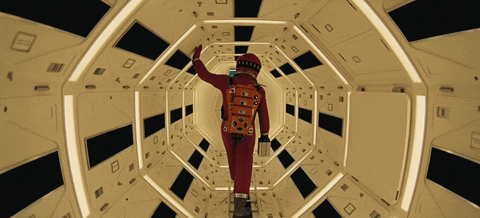
5. 2001: A Space Odyssey (1968) – dir. Stanley Kubrick
This is my favorite movie. I’ve seen it more times than I can remember. I can quote every line. I own a signed copy of the screenplay. And I have no idea what’s actually going on.
2001 is a mystery. More than a mystery. A Möbius strip of a movie that you experience rather than understand. Apes and a monolith. “Open the pod bay doors, HAL.” The moons of Jupiter. Daisy… Daisy… Give me your answer do… A black hole and a star child. Anyone looking for a linear plot with a conventional three-act structure will be disappointed, and yet the film continues to amass new fans, decade after decade.
The first time I saw 2001, I sort of hated it. I mean, I appreciated its design. The cinematography is gorgeous. The music lush and foreboding. The effects groundbreaking at the time and still impressive today. It’s clearly the work of numerous artists at the pinnacle of their powers. But I found the story to be inscrutable and ended up admiring the film the same way one would a well-engineered bridge.
I thought about it often in the weeks and months to come. It felt like a puzzle waiting to be solved. A game you could play, if only you knew the rules.
So I went back and saw it again. And again. And again.
As a strategist, the enduring lesson I take from 2001 and movies like it is this: People crave mystery. What you don’t see, say, or explain is often more thought-provoking than what you do.
Steven Spielberg – a massive Kubrick fan himself – understands this well, Jaws is downright terrifying right up until you see the shark. But those barrels surfacing and then submerging again? They still give me pause every time I step into the ocean.
As human beings, we love to fill in the blanks with our imaginations. Returning to the Nike example again, Inspiring the athlete in everyone does not need to be overly detailed or quantified. Its power lies in the possibilities it provokes. In my practice, I’m careful to leave a bit of mystery in my work, meaning I try not to explain things so much that they lose their magic. Strategy should be a collaborative process between the people making the brand and the audience interacting with it. Internal teams need just enough information and guidance to be liberated as creators, not strangled as rule-followers.
Holding back, trusting your audience, and rewarding our intelligence is crucial. That’s why a film like 2001 not only stands the test of time, but continues to find new life. And that’s why great brand strategy should always leave us intrigued, not simply informed.
Lesson learned: Mystery is powerful. Intrigue your audience. Give us puzzles to solve together. Sometimes what you don’t reveal or explicitly state can be just as important as what you do.
As professionals, it sometimes feels like growth can only happen outside of office hours through taking classes or reading academic books. While those activities certainly help us achieve our goals, don’t overlook the “extracurricular” things that make you special.
So what are you into? What do you love? What do you care about?
Embracing your interests and passions and integrating them into your professional life makes you multi-dimensional. It makes you exceptional. And that ultimately makes you indispensable.
Explore more
New business inquiries.
How can we help?
NYC 11:05
STK 05:05
LA 08:05
Get our newsletter
Sign up for updates,
insights, and inspirations
from our studio.

